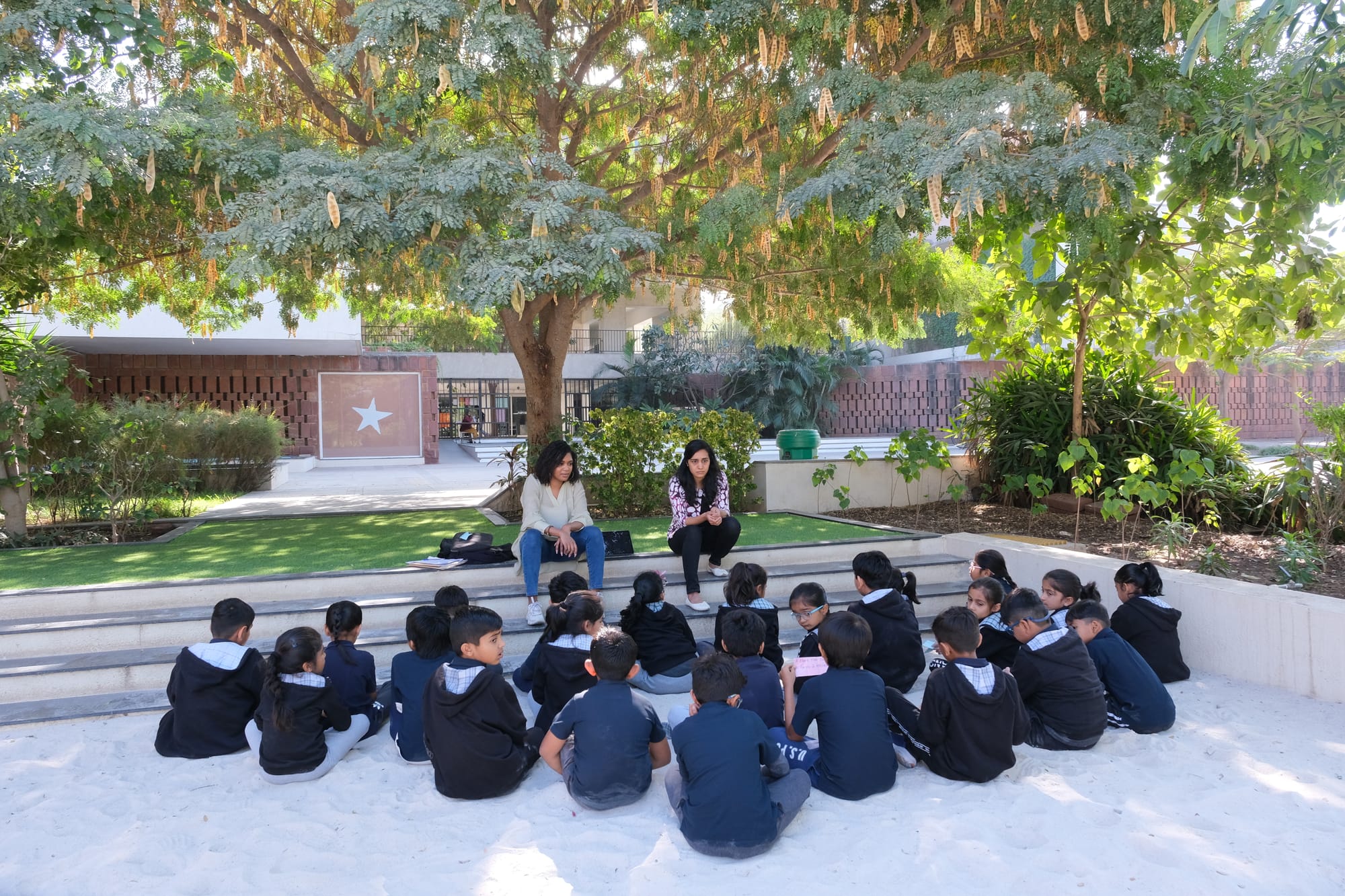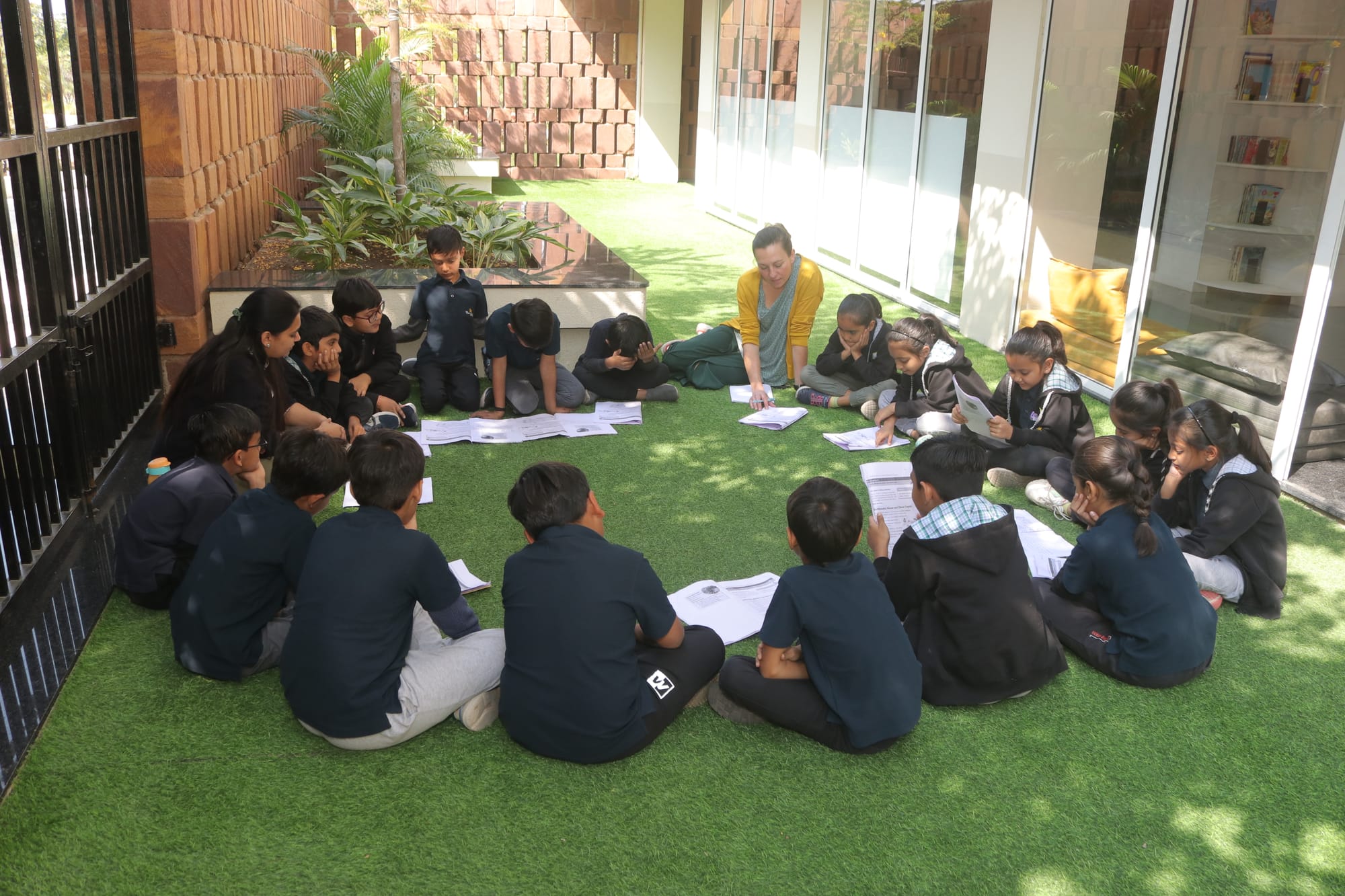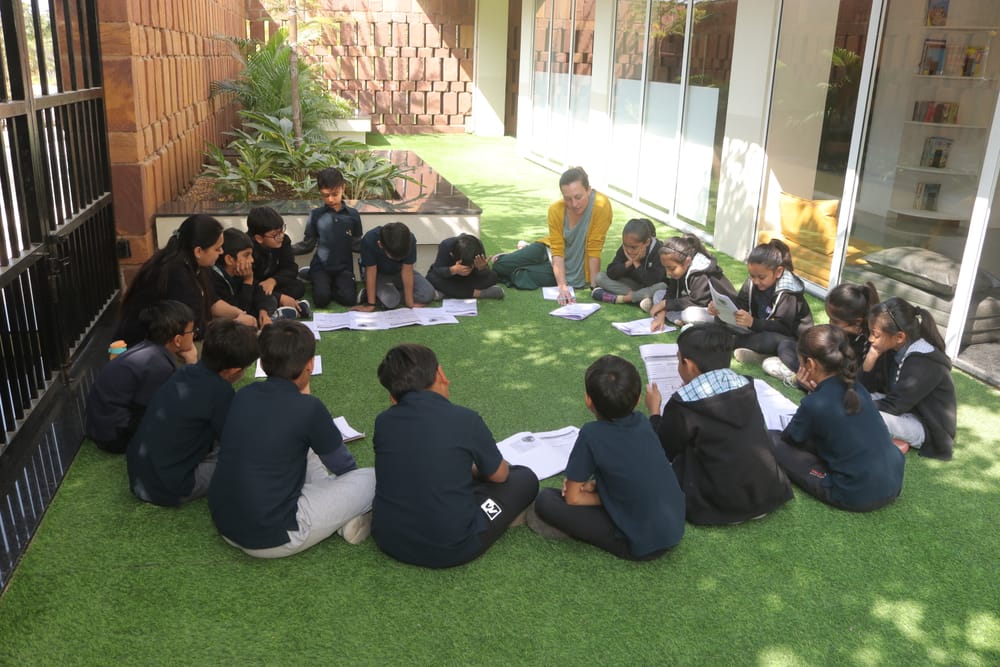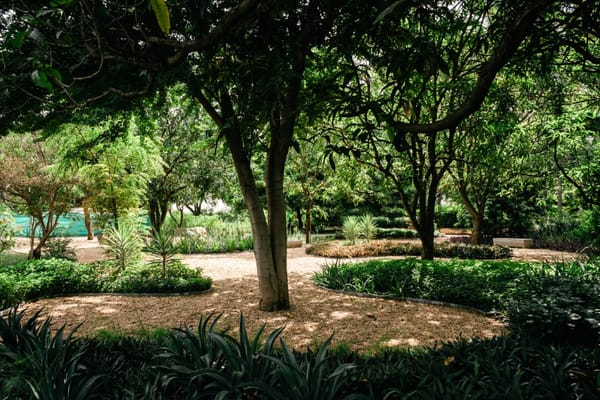Learning Outdoors in School
It is rare to enter a school and find kids sitting under a tree and reading a book, all together. It is a simple image, one that cannot be too hard to conjure in one's mind. Perhaps a teacher reading with the kids. It gets progressively harder to picture more connection with the 'outdoor' world within the school environment. Replace a simple act or reading with a more complicated activity of having discussions or activities that involve tools of writing, or projection. Even the simplest of acts is hard to achieve. Outdoor learning is more than mere going out of class. It requires thinking about affordances that the outdoor space provides. Local weather and context are paramount. Ergonomic seating and shade are critical for any significant length of instruction. A vast majority of schools are perhaps not designed with outdoor learning as conscious intent. Even if the space and design elements are surmounted, the challenges faced by school administrators and teachers in executing the curriculum are manifold. It is extremely difficult to meaningfully integrate nature experiences within the constraints of the curriculum that a teacher has to complete. For e.g. if a topic of plant life cycle is to be taught, it would be far more experiential to take students out in the garden of the school (if it had one) and observe and experiment with plants and trees. Contrast that to seeing a diagram in a textbook or on slides or even a video. These are fundamentally different experiences. But these experiences also demand very different skill-set from teachers. Moreover, it is far more time-consuming to do any sort of field experience even within school. These factors are generally not considered, which shows a lack of understanding of how learning institutions, particularly schools, function.

The life of a child in the modern city is barely by nature and its rhythms. Learning in crammed school buildings, multiple hours of screen times each day, noise and pollution of the city: one wonders where is the experience of nature, and its slowness and seasonality in this? Multiple studies have been conducted of over many years and in many contexts, including primary schools, which report a restorative effect of nature on kids, specifically from attention fatigue. Restoration refers to the psychological and physiological recovery processes, both in attention restoration and stress reduction from everyday life. Moreover, learning outdoors and in nature has subsequent positive effect in classroom learning.
Contact with nature has contributes to more than learning. It has positive effects on the health and well-being of children. There is substantial evidence suggesting that trees and natural areas are important for healthy communities for children.

Teachers and schools are under great constraints of curriculum, entrance exams, university admissions, etc. These all contribute to what a school or teacher can meaningfully accomplish or prioritise in learning design. But there are some schools that provide the environment, both in physical space and in curriculum design, that can bring kids closer to nature. However, it cannot only be upon schools to create such an environment. Homes, parks, urban areas, entire towns and cities must give some thought to contextual landscapes that foster health, well-being and creative play in our kids.
I wrote this article for India Today and is also available at: https://www.indiatoday.in/amp/education-today/featurephilia/story/explained-why-our-education-system-lacks-eco-conscious-learning-2491562-2024-01-21



